It usually starts with a photo. You see a candid picture of yourself from the side, and your heart sinks. “Is that really me?” you wonder, staring at the rounded hump at the base of your neck. That curve, often called a “Dowager's Hump” (or clinically, Hyperkyphosis), makes us look older, tired, and less confident.
As a fitness professional, this is the #1 concern I hear from clients today. We live in a “forward-head” world, glued to screens, which trains our bodies into this hunch. But here is the truth doctors might not emphasize enough: This is not permanent.
In this guide, I’m sharing the exact “Correction Protocol” I use to help clients reverse this curve. It’s not just about random stretches; it requires a specific combination of Deep Tissue Release, Strengthening, and Spinal Alignment Tools.
Jump to Section:
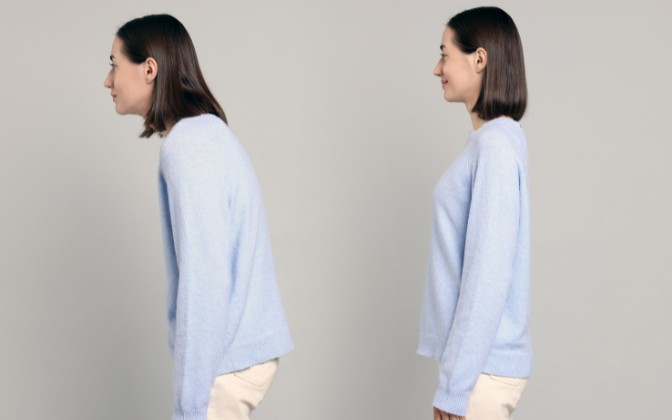
The Protocol Phase 1: Understanding the Enemy
To fix the hump, you must understand it. It’s an accumulation of fat and tissue protecting a stressed spine. When your head drifts forward (text-neck), your body builds this “cushion” to support the weight of your heavy head.
The Hidden Cost of Ignoring It

It’s not just aesthetic. If left untreated, that simple curve creates a domino effect on your health:
- Pain and Stiffness: Neck, shoulder, and back pain are common companions.
- Reduced Mobility: It can become harder to move your head and upper body freely.
- Breathing Difficulties: In severe cases, the hunched posture can restrict lung capacity.
- Headaches: The forward head posture can strain neck muscles, leading to tension headaches.
The “Root Cause” Checklist

Before we start the exercises, check if you are guilty of these common triggers:
- Tech Neck: Looking down at a phone or laptop for 4+ hours a day.
- The “Comfort” Trap: Sleeping on high pillows or sitting on soft sofas that encourage slouching.
- Weak Back Chain: Strong chest muscles pulling weak back muscles forward.
⚠️ Safety Check: Who Should Talk to a Doctor?
While these exercises are generally safe, please consult a healthcare professional before starting if you have:
- Osteoporosis or history of spinal fractures.
- Numbness or tingling in your arms or fingers.
- Severe pain that worsens with movement.
Protocol Essentials: Equipment Checklist
To follow this protocol effectively and safely, here are the tools referenced in the guide:
- For Floor Safety: A Thick, Non-Slip Yoga Mat (Crucial for spine protection).
- For Release: A Vibrating Massage Ball & a Foam Roller.
- For Strengthening: Pull-Up Assistance Bands.
Note: The mat is the only “must-have” for comfort. The other tools are optional upgrades that can make the routine easier and more effective.
Phase 2: The Reversal Routine (Exercises)
This routine is designed to be done 3-4 times a week. It follows a strict order: Release > Mobilize > Strengthen.
Note on Form: Proper form is everything. Do not perform these on a hard floor or a thin rug, as it can cause discomfort to your spine. Ensure you use a thick mat to protect your joints during the floor work.
Step 0: The “Release” (Don't Skip This!)
Most people fail because they try to strengthen “tight” muscles. You must unlock them first. While a foam roller is good, for the specific Dowager's Hump area, I use a Vibrating Peanut Massage Ball. The vibration penetrates deeper than static pressure, releasing the fascia that holds the hump in place.
- How to: Place the vibrating ball between your shoulder blades while leaning against a wall or lying on the floor. Let the vibration work on tight spots for 60 seconds.
Warm-up: Prepare the Spine
Before starting these exercises, a gentle warm up is necessary. This can involve arm circles, shoulder rolls and neck rotations. The goal is to increase blood flow to the muscles and prepare them for the exercises ahead.
1. Chin Tucks (Strengthens Neck Flexors)

- How to: Sit or stand tall. Gently draw your chin straight back (not down), as if sliding your head along a shelf to make a small double chin. Keep your gaze level and the back of your neck long; you should feel a light stretch at the base of your neck.
- Hold: 3–5 seconds.
- Reps: 10–15 repetitions, 2–3 sets.
- Coach's Tip: Imagine a string lifting the crown of your head upward as you tuck—think “back, not down.”
2. Scapular Squeezes (Strengthens Upper Back)
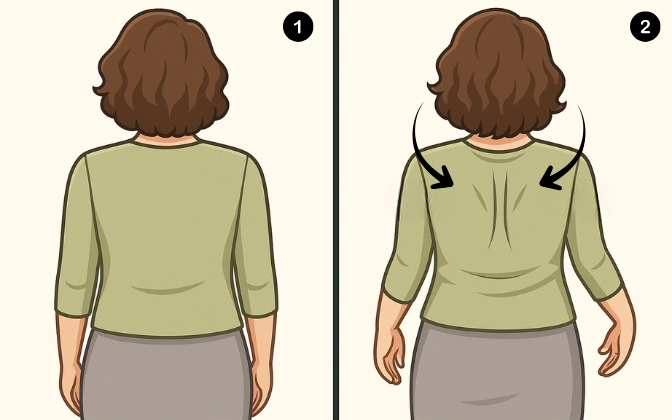
- How to: Sit or stand tall with arms relaxed at your sides. Gently slide your shoulder blades back and slightly together along your rib cage—no shrugging and no arching your lower back. Keep your gaze level and chest quiet.
- Hold: 5 seconds.
- Reps: 10–12 repetitions, 2–3 sets.
- Coach's Tip: Think “slide the blades toward your spine” and feel the work between the shoulder blades, not in the upper traps.
3. Wall Angels (Improves Shoulder Mobility)
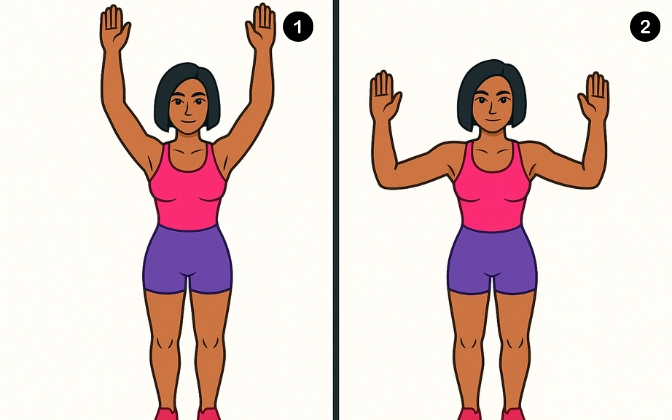
- How to: Stand with your back flat against a wall, feet a few inches away. Bend your elbows to 90 degrees (like a goalpost) and try to keep your forearms and the back of your hands against the wall. Slowly slide your arms up and down the wall, maintaining contact as much as possible.
- Hold: Move slowly and controlled for each rep.
- Reps: 10 repetitions, 2-3 sets.
- Coach's Tip: This one can be challenging! If you can't keep full contact with the wall, go as far as you comfortably can.
4. Thoracic Spine Foam Rolling (Releases Upper Back Tension)
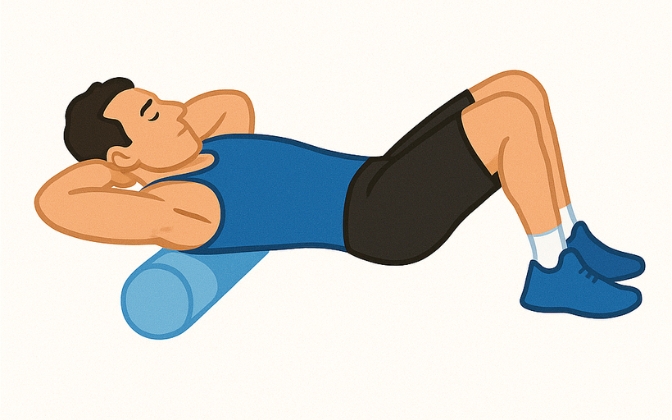
- How to: Lie on your back with a foam roller placed horizontally under your upper back (mid-back area). Support your head with your hands. Using your legs, slowly roll your upper back over the foam roller, from your mid-back to the top of your shoulders.
- Duration: 1-2 minutes.
- Coach's Tip: Beginners should start with a Medium-Density Foam Roller to avoid discomfort. If you are advanced and want to target the curve deeper, upgrade to a High-Density EPP Roller.
5. Bird Dog (Core and Back Stability)

- How to: Start on your hands and knees (tabletop position). Extend your right arm straight forward and your left leg straight back, keeping them parallel to the floor. Maintain a flat back and engage your core.
- Hold: 3-5 seconds.
- Reps: 10 repetitions on each side, 2-3 sets.
- Coach's Tip: Focus on stability and control rather than speed. Imagine balancing a glass of water on your back.
6. Cat-Cow Stretch (Improves Spinal Mobility)

- How to: Start on all fours. Inhale, drop your belly towards the floor, and look up (Cow Pose). Exhale, round your spine towards the ceiling, and tuck your chin to your chest (Cat Pose).
- Flow: Move smoothly between the two poses.
- Reps: 10-15 repetitions, 1-2 sets.
- Coach's Tip: Focus on the movement of your spine vertebrae by vertebrae, not just your head.
7. Mid-Back Fly with Resistance Band (The Posture Builder)

- How to: Stand with feet shoulder-width apart. Hold a resistance band in front of you, palms facing each other. Keeping your arms straight, pull the band apart, squeezing your shoulder blades together.
- Reps: 12-15 repetitions, 2-3 sets.
- Coach's Tip: Choose a band with appropriate resistance. We recommend using Pull-Up Assistance Bands because they are wider and more durable, offering stable tension specifically for back rehabilitation exercises compared to thin tube bands.
8. Prone Y and T (Strengthens Lower Traps)
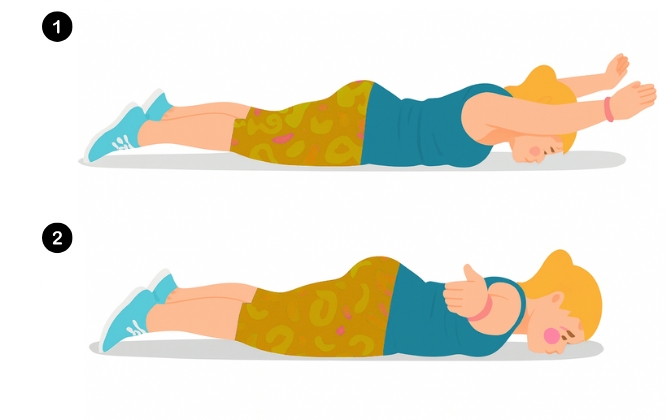
- How to: Lie face down on a mat with your arms extended overhead in a “Y” shape. Lift your arms and chest slightly off the ground, squeezing your shoulder blades. Lower back down. Then, bring your arms out to the sides in a “T” shape and repeat the lift.
- Reps: 10-12 repetitions of each (Y and T), 2-3 sets.
- Coach's Tip: Keep your neck in a neutral position. Imagine a straight line from your head to your tailbone.
9. Superman (Strengthens Posterior Chain)

- How to: Lie on your stomach with arms extended overhead. Simultaneously lift your arms, legs, and chest off the ground, as if you're flying.
- Hold: 2-3 seconds
- Reps: 10-15 reps, 2-3 sets.
10. Doorway Stretch (Opens Chest)

- How to: Stand in a doorway with your forearms placed on the doorframe at shoulder height, elbows bent at 90 degrees. Step forward slightly until you feel a stretch in your chest and shoulders.
- Hold: 20-30 seconds
- Reps: 2-3 sets
Phase 3: The “23-Hour” Rule (Accelerate Results)
Here is the hard truth: You exercise for 1 hour, but you ruin your posture for the other 23 hours. To fix a Dowager's Hump quickly, you need to support your spine while you work and sleep. These are the three essential tools I recommend to my clients to speed up the process:
- 1. Fix Your Sleep (8 Hours): If you wake up with a stiff neck, your pillow is likely pushing your head forward, making the hump worse. Switch to an Orthopedic Cooling Pillow. It cradles the neck and restores the natural “C-curve” while you sleep.
- 2. Fix Your Work (8 Hours): Stop looking down. If you use a laptop, an Adjustable Laptop Stand is essential to bring the screen to eye level. Combine this with a Memory Foam Seat Cushion to align your hips, which naturally straightens your upper back.
- 3. The “Reset” Button (10 Minutes): After a long day, gravity has compressed your spine. Lie on a Cervical Traction Neck Relaxer for just 10 minutes. It gently decompresses the vertebrae. For severe stiffness, an Inflatable Neck Traction Device can provide active relief.
Bonus Tip: If you struggle to remember to stand tall, wearing a Discreet Posture Corrector for 1 hour a day can help retrain your muscle memory.
Final Thoughts: Consistency Wins
Reversing a Dowager's Hump isn't a sprint; it's a commitment to your future self. By combining this exercise routine with the right supportive tools, you aren't just fixing a cosmetic issue—you are reclaiming your health, your height, and your confidence.
Start today. Your spine will thank you.
References
- The Relationship Between Forward Head Posture and Neck Pain: a Systematic Review and Meta-Analysis — Current Reviews in Musculoskeletal Medicine, 2019.
- Effect of forward head posture on thoracic shape and respiratory function — Journal of Physical Therapy Science, 2019.
- Impact of adding scapular stabilization to postural correctional exercises on symptomatic forward head posture: a randomized controlled trial — European Journal of Physical and Rehabilitation Medicine, 2022.
- Severity of Kyphosis and Decline in Lung Function: The Framingham Study — The Journals of Gerontology: Series A, 2017.
- Forward head posture and neck mobility in chronic tension-type headache: a blinded, controlled study — Cephalalgia, 2006.
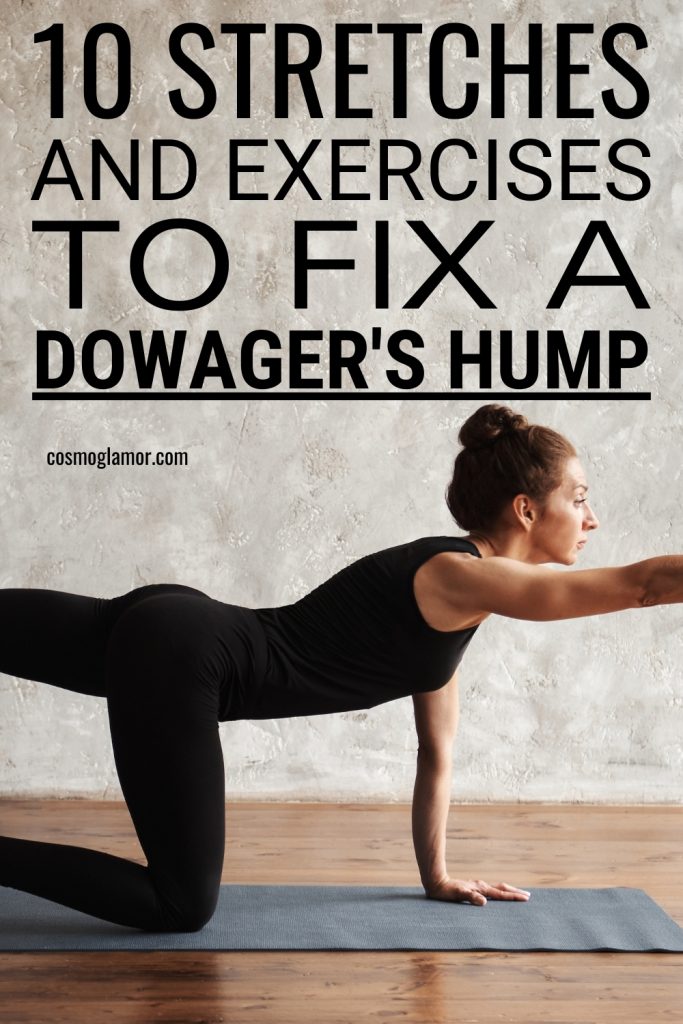
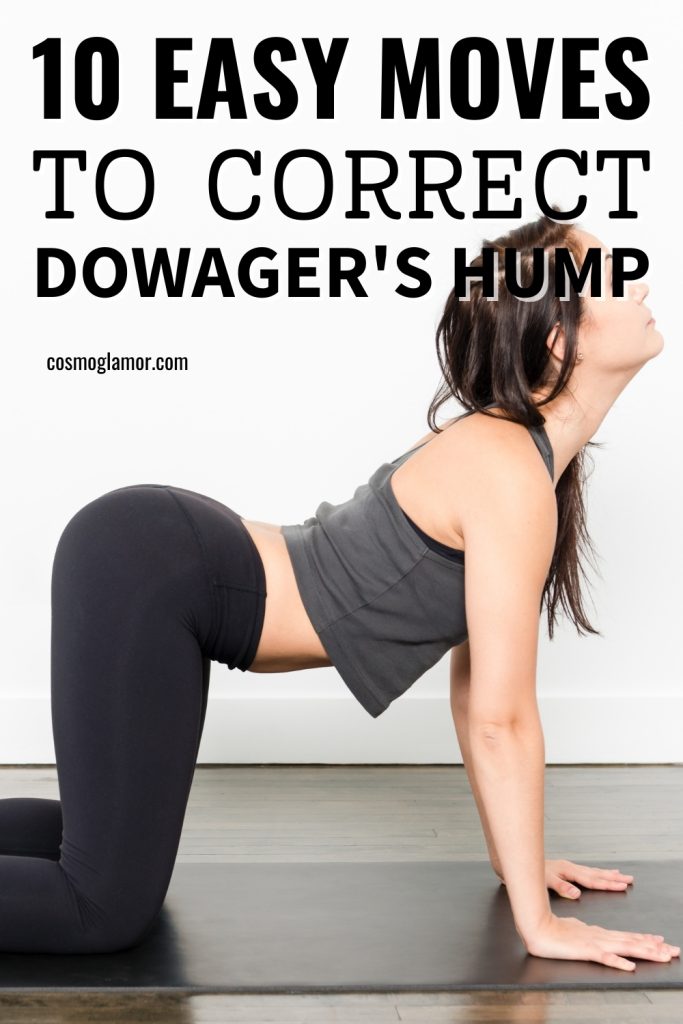

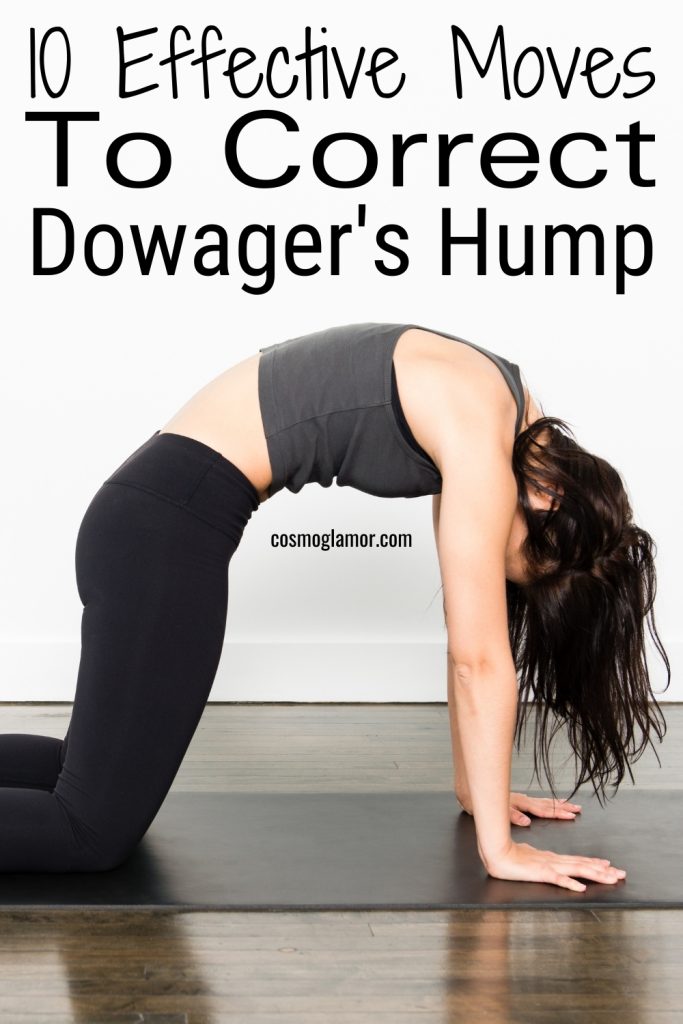





6 Responses
Thank you. I hope to do these things
That’s wonderful to hear! I’m so glad you found the article helpful. Taking that first step of wanting to do them is a fantastic start. You’ve got this, and I’m rooting for you on your journey to a healthier posture! Let me know if any questions come up as you get started.
Thank you for this article! While I eat well, and I’m in pretty good shape, my posture changed after a car accident where I experienced whiplash and was in a fair amount of pain for about 2.5 years. Thanks to people like you sharing info online, I used targeted strength training to fix the issues causing me pain, but my posture is still off, so I’m trying to correct it. I already do some of these exercises as part of my regimen from my accident, but I’m hoping that adding the others makes a difference for me. Between the accident and peri-menopause, I feel like my body is fighting against me, but I’m determined to figure it out. Thank you for sharing.
Thank you so much for sharing your story. Overcoming 2.5 years of pain after an accident like that shows incredible strength and resilience. It’s amazing that you’ve been so proactive in your own recovery.
That feeling of your body fighting against you, especially when you’re navigating perimenopause on top of everything else, is so real and can be incredibly frustrating. Your determination to figure it out is truly inspiring. I’m very hopeful that adding these new movements will give your body the gentle signals it needs to find its alignment again. Wishing you the very best on your journey.
Thank you for these! I’ll start these too!
I have kyphosis and Lordosis since 5th grade, wore 23 hour back brace for 3 years. It helped but I still have it.
I feel so much tension in my upper back. I’m excited to feel some relief from these.
Wow, thank you so much for sharing your journey with this. Dealing with kyphosis since childhood and wearing a brace for that long sounds incredibly challenging. That constant tension in the upper back can be so draining, and I’m really hopeful that these gentle movements can help bring you some of the relief you’re looking for. Just remember to start slow and listen to your body. Wishing you all the best!